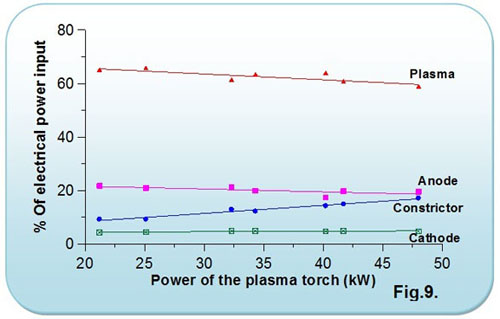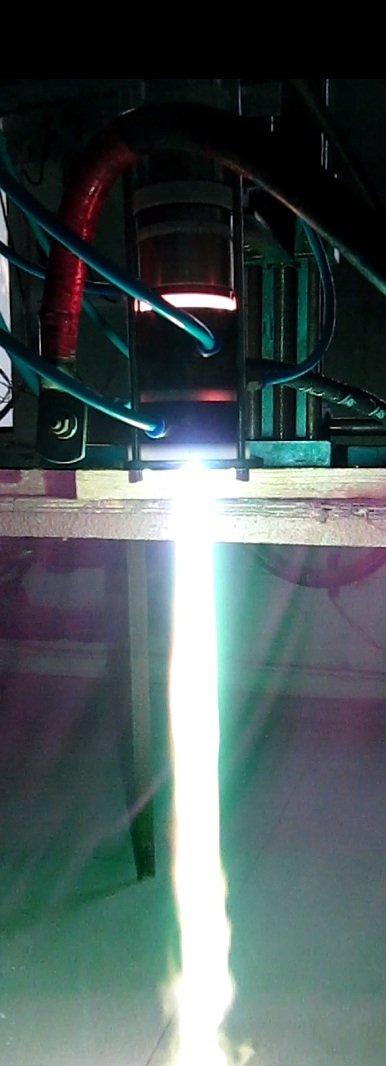

A compact hafnium electrode air plasma torch operating in the range of 30 kW is developed and available for transfer of technology to industry. It takes air from the atmosphere and converts that into a controlled well defined long jet of large volume air plasma with a maximum core temperature around 9000K and electro-thermal efficiency of 60% or more. The device produces plasma in the form of an intensely luminous extremely hot radiating atmospheric pressure cylindrical plasma jet controlled in terms of its length, diameter, velocity and power content.
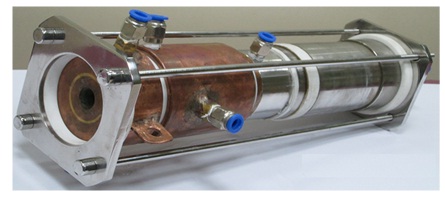
A thermal plasma jet is a beam of huge concentrated thermal energy at very high temperature consisting of electrons, ions and neutrals. Such plasmas are naturally formed in atmosphere during thunderbolt and observed as a bright flash in the sky. Similar plasma is produced by the offered technology in the form of an intensely luminous extremely hot radiating atmospheric pressure cylindrical plasma jet controlled in terms of its length, diameter, velocity and power content using a small device called air plasma torch. The novel technology offers a compact device [ Fig.1 & Fig.2] that takes air from the atmosphere and converts it into a controlled well defined jet of air plasma at an electrical power level of many tens of kW with efficiency greater than 60%. Low device cost, low operational cost, simple design, use of cheapest gas (atmospheric air), high efficiency (>60%), high peak temperature (~9000 K at the anode exit) and ease of control are some of the key features of the technology.

Internal components of the device are shown in Fig.3. It has three major sections: (1) plasma source (2) constrictor and (3) main anode. The plasma source section consists of a specially designed hafnium based cathode, gas distributor and coolant distributor. A single coolant loop caters to all the sectors in this section. With the help of a radio-frequency igniter, the plasma (arc) is initiated in this section between the cathode and the nozzle. Once the source is on, the arc is transferred to the constrictor section at low power. The role of the constrictor is to streamline the plasma jet as well as develop appropriate voltage in the plasma column for operation at a given power level. For a given current and gas flow rate, the power of the plasma jet can be adjusted just by changing length of this constrictor section. The power of the plasma is gradually increased to medium level. Next, the arc is transferred the main anode and full power of the jet is achieved. An extremely bright well-formed huge jet comes out from the device as shown in Fig.4.
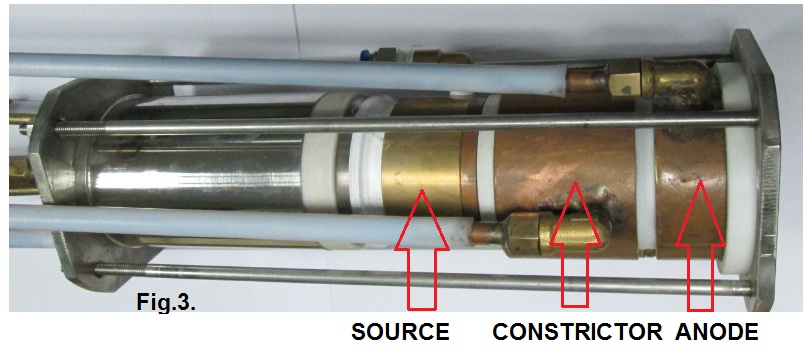
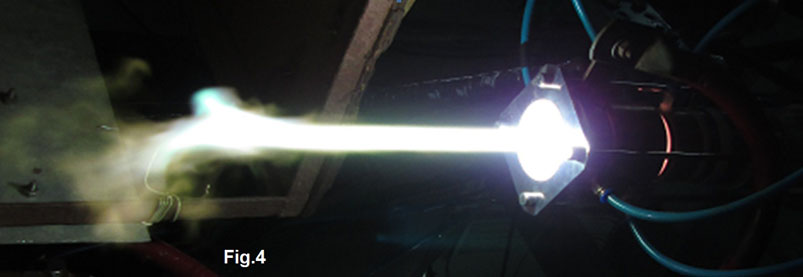
The section of the assembled plasma torch is shown in Fig.5. Electrical connection with power supply for operation is shown in Fig.6. Initially both the connectors "A" and "B" are connected and an arc is initiated between the cathode and the nozzle. The connectors are sequentially opened to make a gradual transfer of the arc from the cathode to the constrictor and finally to the main anode. While in operation at full power, both the connectors remain open.

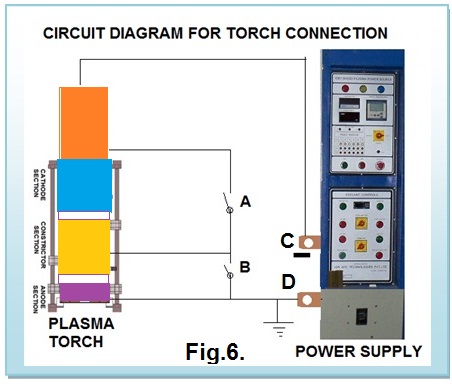
The complete plasma system consists of the following five subsystems:
V-I characteristics
Typical V-I characteristics for the plasma torch is shown in figure 7. The arc voltage remains nearly constant over a range of currents. A slight drop in the voltage is observed at higher currents. Increase in power with increase in current is slightly non-linear. For operation around 50 kW the torch operates near current 350 A and voltage 156 V.

Cathode performance
As seen in Fig.8 extremely low electrode loss due to erosion is observed for the cathodes. For new electrodes, the loss is relatively high at the start but decreases fast with time and stays at that extremely low level. The electrode loss reduces with increase in current.
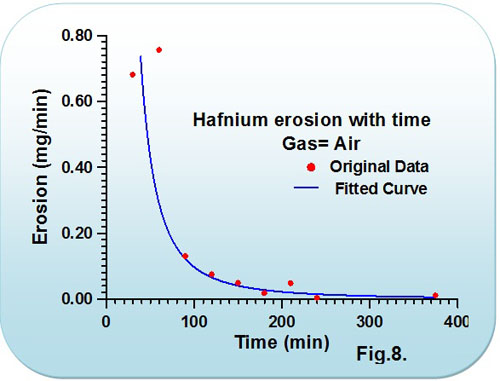
Efficiency and Thermal Losses
Power delivered into the plasma by the power supply is partly dissipated in heating the anode, constrictor and the cathode system. Rest of the delivered power goes into the plasma. As seen in Fig.9 Less than 5 % of the total input electrical power is dissipated by the cathode. The torch efficiency is nearly 65% around 20 kW and around 60% at 50 kW. In transferred arc mode, only loss is due to the cathode and efficiency goes above 95%.
